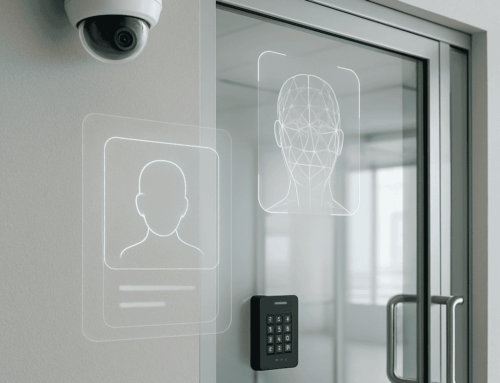IWMS: It’s like a central nervous system for your facilities team

The kinds of management systems that small businesses use to maintain their facilities quickly become unwieldy once the operation grows past a certain point. With 20 employees you don’t call your facilities team to change a light bulb or adjust the thermostat, but at 200 or 2,000 employees, even simple tasks need to follow a methodical business process. When you add in multiple office locations, the challenge grows even larger.
What you need is an integrated workplace management system or IWMS.
Think of it as an artificial central nervous system for your entire operation. It’s a software program that collects information from a range of systems, including HVAC, lighting, power, furniture, IT equipment, and more. Just like you can’t operate a successful business without proper accounting practices, an IWMS helps you maintain your physical office facilities using a range of metrics and datasets.
Who needs an IWMS and why?
As stated at the beginning, small businesses rarely need an IWMS to keep a single office, or even a network of small locations running smoothly. However, as your business scales, the ability to monitor utility usage, furniture inventory, and headcount-to-square-footage across a large or multiple large facilities becomes make or break. You will quickly drown without an IWMS to keep you afloat.
An IWMS will more than pay for itself when it’s time for your business to move locations. The ability to quickly access the relative physical size and asset inventory of your business can make it possible to transition smoothly from one office to the next.
Going one step further, an IWMS is absolutely critical when it comes to preventative maintenance and equipment lifecycle management. The software monitors when a specific task needs to happen or when a piece of equipment is due for service. Waiting until equipment or office infrastructure breaks is a guaranteed way to frustrate your clients and lose money. Unplanned maintenance costs more than money, it can compromise the integrity of your entire operation.
An IWMS is the software program that keeps on giving
Most IWMS’s are flexible enough to work for a range of business cases. And if implemented properly the benefits are pretty clear.
1. Reduce Costs
This happens by eliminating unnecessary equipment and furniture redundancy. It can also happen by revealing unused equipment that can be sold or written off. An IWMS makes it easy to schedule maintenance across your organization, allowing you time to set up contingency plans and prepare employees for outages or downtime.
2. Increase Productivity
An IWMS makes it easier to see how your office is being used and where you can optimize it to help employees complete their work faster and easier. You can also identify resource bottlenecks and waste.
3. Improve Customer Service
Depending on your business an IWMS can provide direct benefits to you customers in the form of cleaner, better-maintained facilities are that fully stocked with the right resources, or indirect benefits via your employees working in a space that is designed around their needs and work objectives.
4. Optimize Physical Space
Especially when your company is growing or restructuring, the ability to virtually plan out workspace configurations is non-negotiable. Just “squeezing in another cubicle” can quickly become a fire hazard and a constant source of stress and frustration for your employees.
5. Keep Employees Happier
An employee with enough of the right resources to do their job is likely to be a happier employee. An IWMS will help you plan out who needs which pieces of equipment and project when it will need replaced or upgraded.
6. Better Reporting
An IWMS makes it so much easier and accurate to answer questions such as “how many computers, or desk chairs does our company need?”, and “when will we need to buy more?” Whether you’re planning next year’s budget or trying to evaluate historical utility consumption, a properly run IWMS can turn hundreds of man-hours worth of work into a matter of hours or even minutes.
7. Help Facilities Run Smoother
The primary force driving the need for integrated workplace management systems is complexity. No single person or spreadsheet can hold all the data you need to run an efficient facilities department. The right software allows you to centralize that information and make sure that the right people have access. This even applies to situations that don’t directly call on the facilities team, such as when executive leadership is evaluating real estate options for a new office, or relocation — they can quickly verify current needs and capacity.
The Right Partner Can Keep The Complexity From Overwhelming You
As we’ve said multiple times, integrated workplace management systems are all about dealing with complexity and they can be highly complex software tools in their own right. It’s a good idea to look for a technology consultant who can evaluate the real needs of your business and match you with a software solution that offers the right features and value for money. I.e. Smart Systems has extensive experience implementing IWMS’s in a range of sophisticated business cases. If you’re not sure what you need, we can help.
About i.e.Smart Systems
i.e.Smart Systems is a Houston, TX based technology integration partner that specializes in design and installation of audio/visual technology and structured cabling. For more than three decades, our team of in-house experts has partnered with business owners, architectural firms, general contractors, construction managers, real estate developers, and designers in the Houston market, to deliver reliable, scalable solutions that align with their unique goals.




